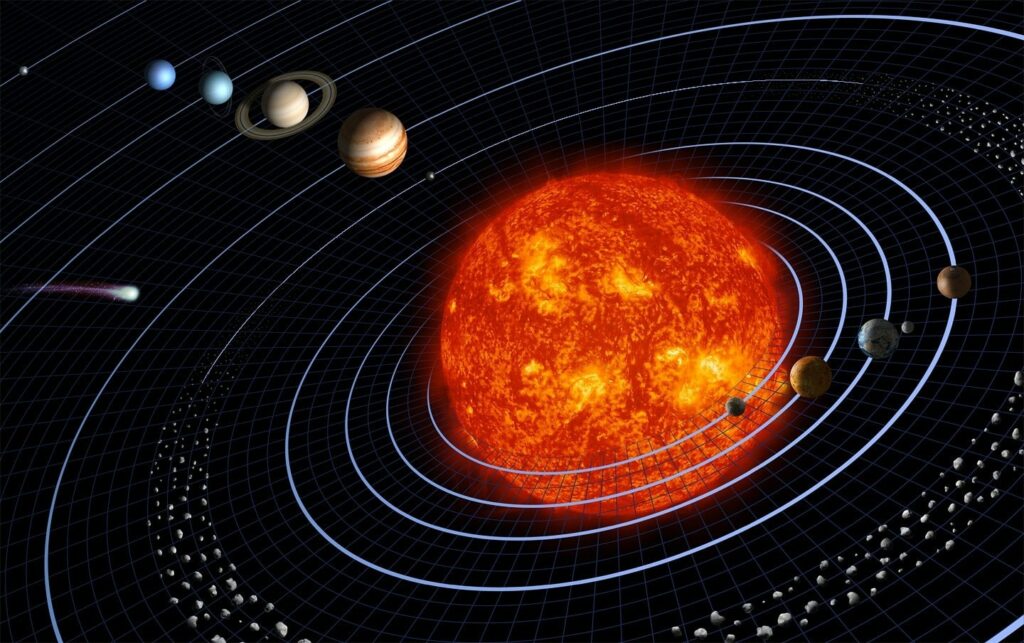We don’t always realize how little dust we are in the vastness of the Universe. Thus, we observe our sun every day, like a small sphere in the sky, without really realizing the real size of this star. And for good reason: nearly 150 million kilometers separate us! One astronomer, however, has managed to put things in context: he has been creating amazing animations for several years, including one in which all the objects in our solar system are represented to scale.
Dr. James O’Donoghue, a Japanese Space Agency planetary scientist (and former NASA researcher), made a short video in 2020 in which all the planets around us are shown to scale, in terms of size, rotational speed and of inclination. The result allows you to have a completely different point of view on the world, and the size of our planet seems really ridiculous next to the gas giants (all the more so compared to the Sun!). The video has already racked up over 15 million views so far on Twitter.
The smallest object in our solar system is the dwarf planet Ceres, which lies in the main asteroid belt. This object of about 950 kilometers in diameter is thus opposed to Jupiter, the largest planet in our system, nearly 140,000 kilometers in diameter (nearly 11 times that of the Earth). The relative sizes of each planet are fairly well known; on the other hand, it is interesting to be able to compare here their speeds of rotation.
A captivating perspective
Note that the relative distances are obviously not taken into account here, so as to be able to represent all the planets on a single screen. As the animation progresses, revealing more and more objects from our solar system, we see that Earth is one of the fastest spinning planets; its rotation speed is very close to that of Mars. But we quickly realize that all the giant planets surpass it on this point!
While the Earth takes a day to complete a complete revolution, Neptune and Uranus rotate on their axis in 16 and 17 hours respectively. But it is Jupiter that breaks all records, with an estimated rotation period of around 9 hours and 55 minutes; not far behind is Saturn, with a rotation period of around 10:30.
We will also note in passing the very strong inclination of the planet Uranus with respect to the normal of the ecliptic: its axial inclination is approximately 97°, its poles are thus exposed alternately facing the Sun — for comparison, the axis of our planet is tilted about 23°. According to experts, this extreme tilt was probably caused by an impact with a young protoplanet.
At the end of the animation, it is obviously the Sun which stands out in the background, with its diameter of nearly 1.4 million kilometers! An enormous star compared to our very small planet, just over 12,700 km in diameter… If the dimensions of our star are already very impressive, they nevertheless remain very modest compared to the largest stars in our galaxy. For example, the star Mu Cephei, also called the star Garnet, located in the constellation of Cepheus, has a diameter more than 1000 times greater than that of the Sun (it is equivalent to 1260 solar diameters exactly)!
Currently, another red supergiant holds the size record: UY Scuti, located in the constellation of the Shield of Sobieski. Its radius measures approximately 1708 solar radii (nearly 1.2 billion kilometers). We are definitely very little compared to these oversized objects…
A lot of videos to discover
Note that James O’Donoghue has already made many videos of our solar system to scale. Earlier this year, he notably posted a video depicting the sizes, rotational speeds and tilt — to scale — of the planets in our solar system (including Pluto and Ceres). He points out that the planets probably had the same inclination at the start, but that impacts, tidal forces and/or planetary migration more or less accentuated this inclination thereafter.
Previously, the scientist had also made a video illustrating the real-time path of light from the Earth to the Moon, or even more strikingly, the real-time path of light from the Sun to the Earth, passing through Mercury and Venus. — the video obviously lasts just over eight minutes, which is the time it takes sunlight to travel 149.6 million kilometres… A few weeks ago, he published an even more didactic video, explaining the mechanism of the seasons, solstices and equinoxes:
If it is relatively simple to represent each planet to scale, the main problem remains to represent the distances. The specialist explains that he is obliged to reduce the size of the Sun, not to take into account the relative distances or to reduce the orbits to be able to represent everything on a single screen in his animations. » It’s hard to represent the actual size of the solar system because space is mostly… space », he said in 2019 on his Twitter account. All of these videos are no less impressive.

